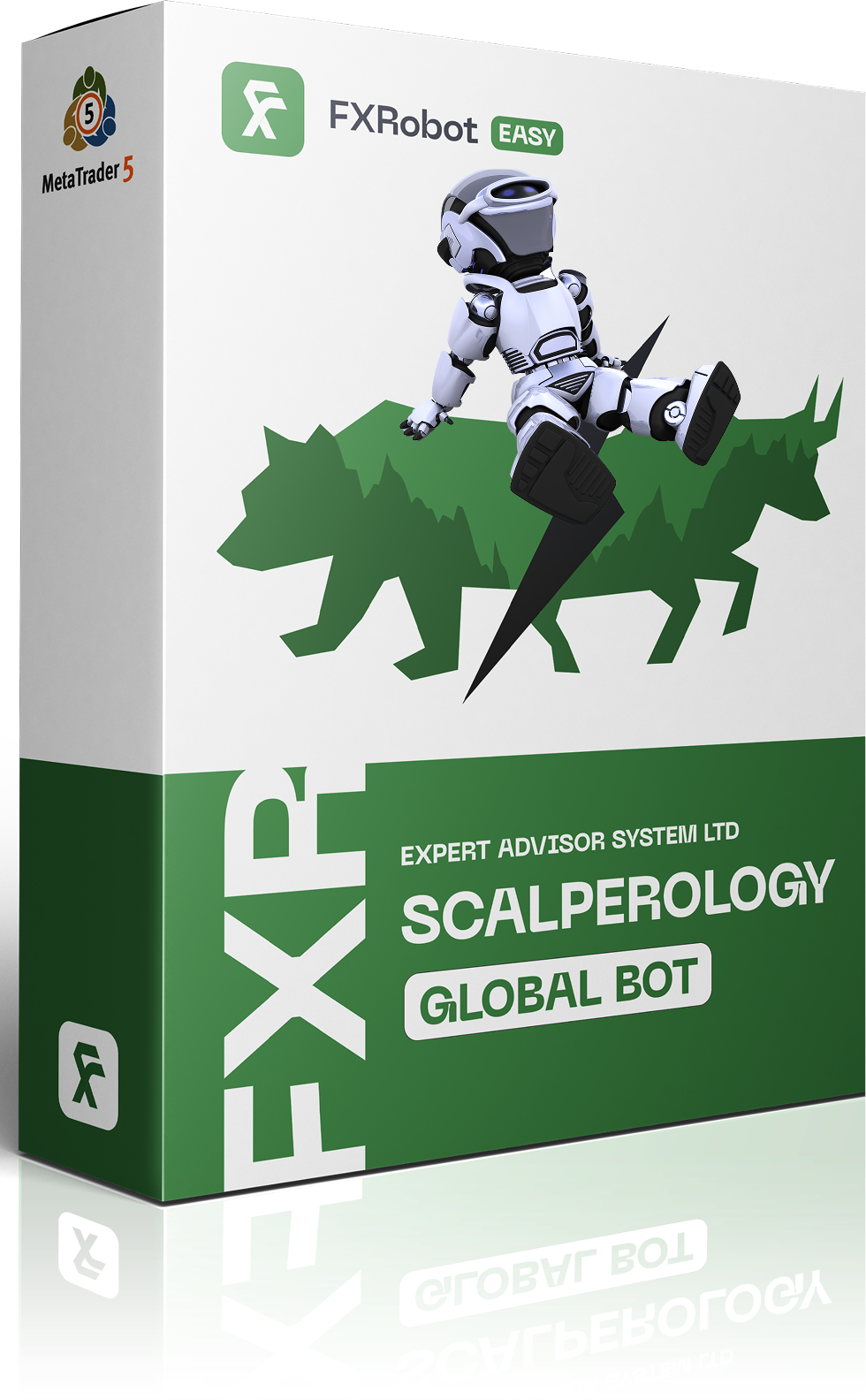At this time, purchasing EASY Bot items is not available to all members. Read more - how to get access to purchase
Trading Algorithms
9posts
Understanding Trading Algorithms
- Trading algorithms are automated systems designed to execute trades based on predetermined criteria. They use a set of rules to analyze market conditions.
- Algorithms can be programmed to react to various indicators such as price movements, volume changes, and other data points to make instantaneous trading decisions.
- These systems aim to minimize human emotion in trading, relying instead on precise mathematical calculations. 🤖
Types of Trading Algorithms
- Scalping Algorithms: Focus on making a large number of small profits on minor price changes. For instance, the Scalp AI expert advisor specializes in high-frequency trading while calculating optimal stop-loss and take-profit levels.
- Trend-following Algorithms: Designed to capitalize on existing market trends. The Forex GOLD Investor employs a trend detection mechanism to make informed decisions based on market direction.
- Mean Reversion Algorithms: These algorithms operate under the assumption that prices will revert to their mean level at some point. The Rise N Shine robot adapts its strategies dynamically based on market behavior.
Key Features of Effective Trading Algorithms
- Robust Risk Management: Effective trading algorithms incorporate risk management techniques, such as dynamic stop-loss settings and take-profit levels, much like the Ultra A.I. Pro's structure.
- Customization: Many trading robots allow users to tailor their strategies based on personal risk tolerance and trading objectives, ensuring that the approach aligns with individual preferences.
- Backtesting Capabilities: Traders can assess the performance of algorithms using historical data to evaluate results and tweak parameters accordingly, as seen with the Molecule AI robot which optimizes strategy through historical performance analysis.
Advantages of Using Trading Algorithms
- Speed: Algorithms can analyze market data and execute trades within milliseconds, offering a significant advantage in fast-moving markets.
- Emotionless Trading: By relying on algorithms, traders can avoid emotional decision-making that often leads to inconsistent results.
- 24/7 Market Monitoring: Automated systems can operate continuously, ensuring that opportunities are not missed even when traders are not actively monitoring the markets. 🌍
Common Criticisms of Trading Algorithms
- Over-optimization: Traders may inadvertently create strategies that perform well on historical data but fail in live conditions due to market volatility.
- Reliance on Technology: Traders may become overly dependent on technology, which can lead to issues if the algorithm encounters unexpected market conditions or technical failures.
- Lack of Flexibility: Some algorithms may struggle to adapt to sudden market changes, unlike a trader who can make real-time adjustments based on news or events. 😅
Future Trends in Trading Algorithms
- Integration of AI and Machine Learning: Algorithms are increasingly incorporating artificial intelligence to improve decision-making and adaptability in changing market conditions.
- Greater Transparency: As more traders seek understanding and trust in automated systems, demand for transparent algorithms that disclose their decision-making processes is likely to rise.
- Focus on Ethical AI: There is a growing conversation around the ethics of trading algorithms, especially regarding market manipulation and providing equal access to trading technology.
Tradetomato claims to revolutionize trading through automation, using AI and machine learning. However, with a current rating of 0.0 and no reviews, it raises questions about its reliability and effectiveness. This article explores the platform's offerings, risks, and comparisons with other trading solutions....
Volven positions itself as a revolutionary trading platform that integrates Wall-Street infrastructure and AI-based execution algorithms into the crypto market. It offers a multiexchange terminal and a dedicated iOS app, providing users with a consolidated view of their trades. However, with a concerning rating of 0.0 and no user reviews, we will investigate whether Volven lives up to its promises and if it is worth considering for traders....
Priming Trade offers a range of services for cryptocurrency traders, including a robust algorithm for market analysis and a popular Telegram group. However, despite its engaging community, Priming Trade has yet to gather any user reviews, leaving its effectiveness and reliability in question. This article examines the company's journey, key services, and potential pitfalls for prospective users....
Titan Trading Platform claims to offer an automated trading experience powered by artificial intelligence, promising consistent returns through optimal investment algorithms. However, the platform's alarming zero rating from user reviews raises red flags about its trustworthiness. This article delves into various aspects of the platform, providing potential investors with valuable insights to make informed decisions....
British Bitcoin Profit is an automated trading system designed to optimize cryptocurrency trades using advanced algorithms and AI technologies. Despite its claims of precision and market advantage, the platform currently holds a dubious rating of 0.0 out of 5, with no reviews available. This article delves into its features, risks, and market perception, providing a comprehensive overview for potential users....
Bitcoin Pro promises a cutting-edge trading algorithm powered by artificial intelligence to assist in cryptocurrency trading. However, with a troubling rating of 0.0 out of 5 and no user reviews, the platform raises several red flags. This article will evaluate its features, risks, and alternatives while prioritizing your financial safety....
Blockonics is introduced as a platform purportedly staffed by industry experts promising superior investment returns through sophisticated trading algorithms. However, the striking absence of user feedback combined with a concerning overall rating of 0.0 highlights a potential red flag. This review explores the various aspects of Blockonics to better understand the service offering and its inherent risks....
ZCrypto Algo claims to empower traders in the cryptocurrency space with advanced tools and algorithms. However, with a concerning rating of 0.0 and no user feedback, it's crucial to delve deeper into the platform's offerings and evaluate its legitimacy. This review will cover key aspects of ZCrypto Algo to inform potential users before they engage with the platform....
SMARD is an automated trading software that offers crypto traders an innovative way to enhance their trading strategies. With sophisticated algorithms and user-friendly design, SMARD promises profitable outcomes while maintaining security for users' funds through API integration with Binance. This review covers essential aspects of SMARD, including its functionality, user testimonials, and fee structure....










